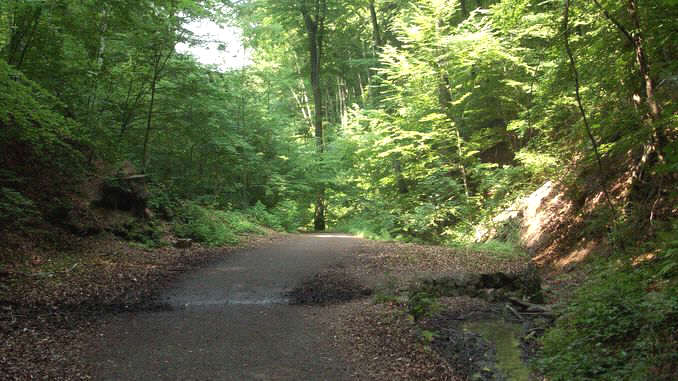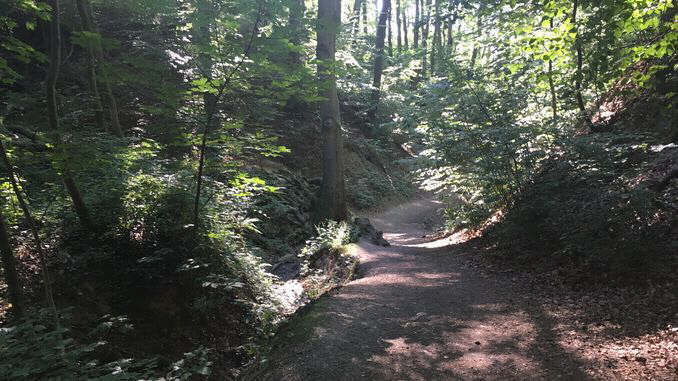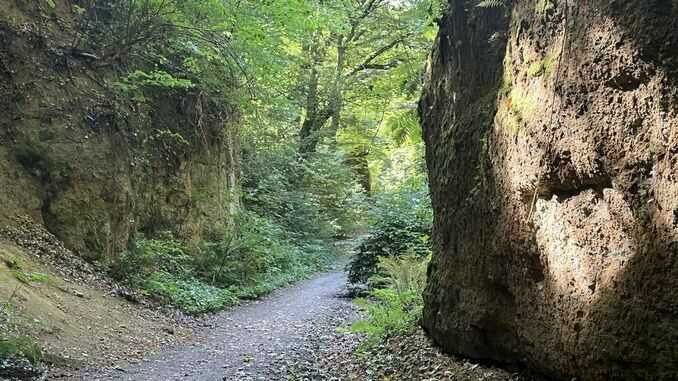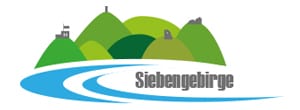
The Nachtigallental, in English Nightingale Valley, in the Siebengebirge is just wonderful. When you are in Königswinter-city, walk up Bahnhofsstraße street, and you are there. From the first moment onwards you feel like in another, merry world.
St. Bernard and the nightingales
A legend from the Middle Ages says that St. Bernard of Clairvaux, while visiting the Monastery of Himmerod, got very upset over nightingales singing. He scolded and nagged until the birds left. They emigrated into a valley in the Siebengebirge, which has been named “Nightingale Valley” after them. St. Bernard went back to Clairvaux – music has been at home here ever since. The Nachtigallental Valley is a paradise for birds.
A monument reminds us of Willi Ostermann, a Rhenish singer, composer, and text writer. In a famous song he refers to the Siebengebirge and the Nachtigallental valley. “Da, wo die sieben Berge am Rheinesstrande steh’n” the chorus says “wo fröhlich sie marschierten durchs Nachtigallental …”

Altar at the entrance
At the entrance there is a stone altar, today it looks a bit worn out. At that time, on 28 June 1925, people from Königswinter and the surrounding area came together in the Nachtigallental for a service in the woods. It was part of “millennium celebrations”, the Rhineland commemorated the millennium of 925 when it became part of the German Empire, back then East Francia. Throughout history, East Francia had become Germany, whereas West Francia had become France.
It is obvious that in the years after the Great War, when the allied forces occupied the Rhineland, people wanted to celebrate with the unoccupied German Reich. But it was above all a political date, to show national German spirit in a region occupied by the French.

When I was a kid, I often played there. In summer, we took a path from the Nightingale Valley to the Lemmerzbad swimming pool on the hill, in winter we brought our bob sleighs. We especially enjoyed riding them through another valley that goes parallel to the Nachtigallental Valley called “Dr Höll”, which translates to “the Hell” … just have a look at these steep walls!
At the end of the Nachtigallental you already see Drachenburg Castle and the medieval castle ruin on Mount Drachenfels. Now you can continue your way up to Mount Drachenfels or turn to the left and go further up into the hills, direction Milchhäuschen, a restaurant in the middle of the Nature Park, and Margarethenhöhe, a popular trailhead for hikes in the mountain area. You get on a broad hiking trail that is part of the “Path of German Unity” from Görlitz in the east to Aachen in the west. If you take this route, you will still not miss the Drachenfels. In front of the Milchhäuschen there is a crossroads, and a way the leads to Drachenfels.

Be the first to comment